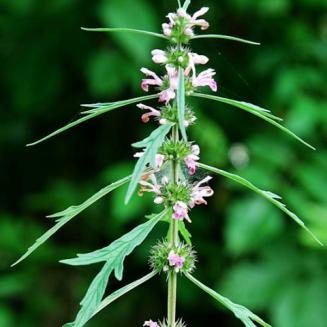
Code: LASY
|
:
|
English names: Siberian motherwort, lion’s tail.
Description: Annual herbaceous plant, 0.5-1m. high. Stems quadrangular. Leaves opposite, the basal nearly round, long-petioled, dentate-crenate; the middle long, pinnatipartite; the upper short, usually entire. Flowers white or pink in axillary whorls. Nutlet small, glabrous.
Flowering period: March - May.
Distribution: Grows wild in wet places and is also cultivated.
Parts used: Shoots carrying young leaves, harvested in summer before flowering and dried in the shade or in dryers at low temperature.
Chemical composition: The whole plant contains a flavonoid (rutin), leucoanthocyanoglucosides, steroids, alkaloids, choline, amino acids and tannin.
Therapeutic uses: The drug enjoys a long-standing reputation in the treatment of irregular menstruation, dysmenorrhoea, polymenorrhoea and post-partum haematometra. It is also used for hypertension and heart disease. It is given in doses of 8 to 10g per day, in the form of a decoction, extract or pills.
 S_ Y_ Hu leaf.jpg)
 S_ Y_ Hu l flower.jpg)